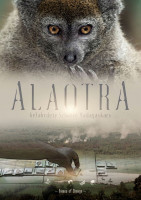Alaotra: Endangered Treasures of Madagascar Filming Locations

Where was Alaotra: Endangered Treasures of Madagascar filmed? Alaotra: Endangered Treasures of Madagascar was filmed in 3 locations across Madagascar, Germany and Switzerland in the following places:
Alaotra: Endangered Treasures of Madagascar Filming Locations
Madagascar, officially the Republic of Madagascar, is an island country comprising the island of Madagascar and numerous smaller peripheral islands. Lying off the southeastern coast of Africa, it is the world's fourth largest island, the second-largest island country and the 46th largest country in the world.
Hanover is the capital and largest city of the German state of Lower Saxony. Its 535,932 population makes it the 13th-largest city in Germany as well as the fourth-largest city in northern Germany after Berlin, Hamburg and Bremen.
The city of Zurich, a global center for banking and finance, lies at the north end of Lake Zurich in northern Switzerland. The picturesque lanes of the central Altstadt (Old Town), on either side of the Limmat River, reflect its pre-medieval history. Waterfront promenades like the Limmatquai follow the river toward the 17th-century Rathaus (town hall).
Alaotra: Endangered Treasures of Madagascar (2017)
This is a film about the people living in the Alaotra region in Madagascar, and about the changes in their social and natural environments. This is also a film about the Bandro, the Alaotra gentle lemur (Hapalemur alaotrensis), that can survive only in the marshes surrounding the lake, and that is facing extinction due to these changes. This is also a film about research; on how to tackle complexity and grasp change. The AlaReLa (Alaotra Resilience Landscape) project aims to understand the various livelihood strategies of people like farmers or fishers, who use the lake, the marshes, and the land surrounding the lake to produce food and charcoal and other sources of energy. Follow us to some of Madagascar's hidden places - far away from the touristic centers - to find out what can happen when modern times seep slowly into traditional ways of living. What can be done to strike a balance between yesterday and tomorrow; between conservation and development?
